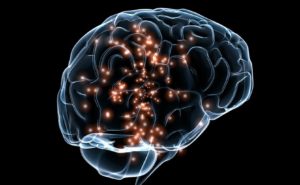
By Marc Airhart
Researchers at The University of Texas at Austin will receive three grants totaling $4 million to develop techniques for imaging and manipulating the activity of neurons in the brain, research that will help scientists explore the mechanisms of addiction, obesity, fear and many other brain states and disorders. The funding, provided by the National Institutes of Health, is part of the Brain Research through Advancing Innovative Neurotechnologies (BRAIN) Initiative launched last year by President Barack Obama.
One of the members of all three research teams awarded grants is Boris Zemelman, who, before coming to UT Austin, was an initial researcher behind the innovation of a powerful new tool in neuroscience called optogenetics, which uses light to turn individual neurons on and off in the intact brain of a living animal.
“These three projects intersect in a very powerful way to launch the next phase of optogenetics, since one is aimed at identifying the key neurons, another at developing a more robust way to activate them, and the other at taking the toolbox into any species,” says Zemelman, an assistant professor of neuroscience.
Zemelman’s colleagues on the grants are Nicholas Priebe, Ila Fiete, Alex Huk and Michael Drew in the Department of Neuroscience; Andrew Ellington in the Department of Molecular Biosciences; and Stephen Martin in the Department of Chemistry.
Priebe leads a three-year project with Zemelman and others that accounts for about three-fourths of the total awarded to the university. Because use of optogenetics has been limited primarily to rodents, the researchers will develop a technique that uses viruses in a way that allows optogenetics to be applied to a wider range of species. They will use the new technique to better understand how visual information is processed in the brain.
A second funded research project will use a drug instead of light to activate specific neurons in order to study and alter long-lasting processes such as epileptic seizures. The third project will chemically tag neurons that are activated in response to specific stimuli. Such tags would enable researchers to image brain activity at a much higher resolution than conventional fMRI brain scans, including snapshots of memories.
Last year, the Obama administration announced it would spearhead a public-private research initiative that would fund the use of emerging technologies and advances to better understand how the brain functions. The project seeks to shed light on functions that relate to brain disorders such as Alzheimer’s disease, schizophrenia, post-traumatic stress disorder, autism and traumatic brain injury.
This year, the NIH invested $85 million in the BRAIN Initiative, and five federal agencies, including the National Science Foundation and the Defense Advanced Research Projects Agency (DARPA), are participants in the project. The University of Texas System also launched a complementary program of grants to promote interdisciplinary and innovative brain research. Ten of the system’s 45 grants for brain research went to projects at UT Austin, including for research by Zemelman and Ellington.
The BRAIN initiative was modeled after the Human Genome Project, a nearly $4 billion investment of federal research funds that went on to generate nearly $800 billion in economic benefits for the country.
